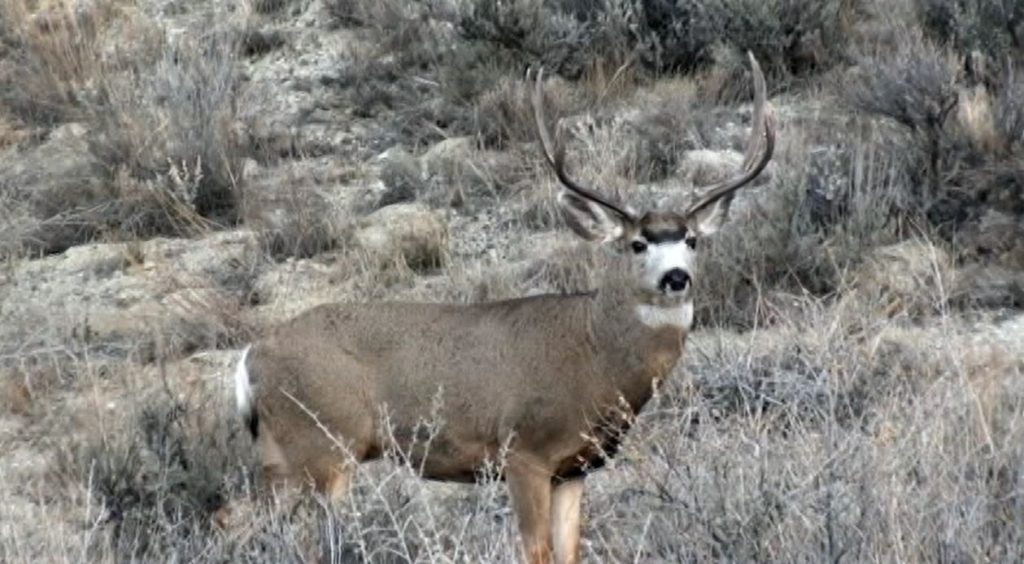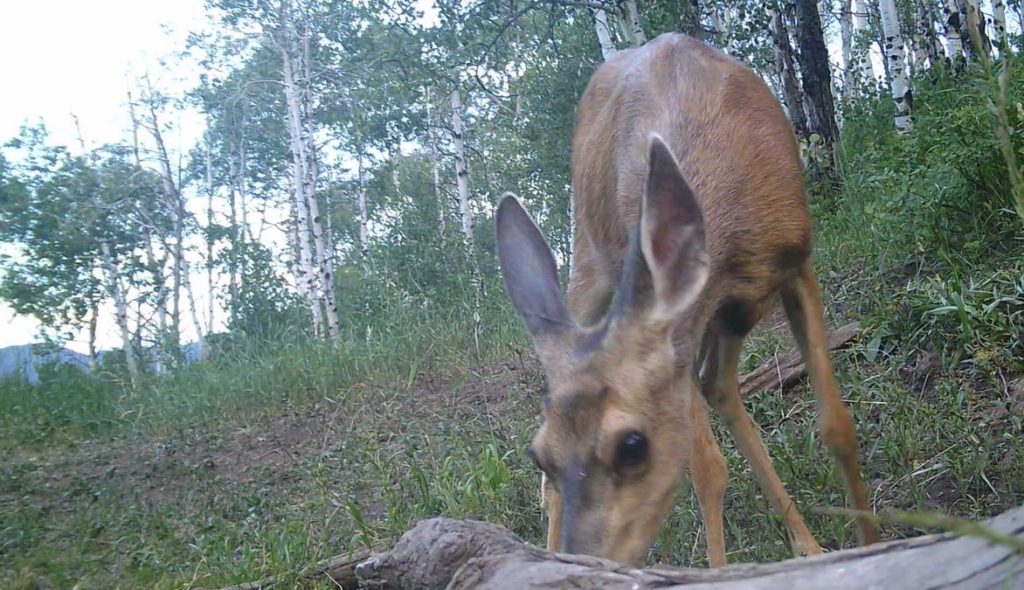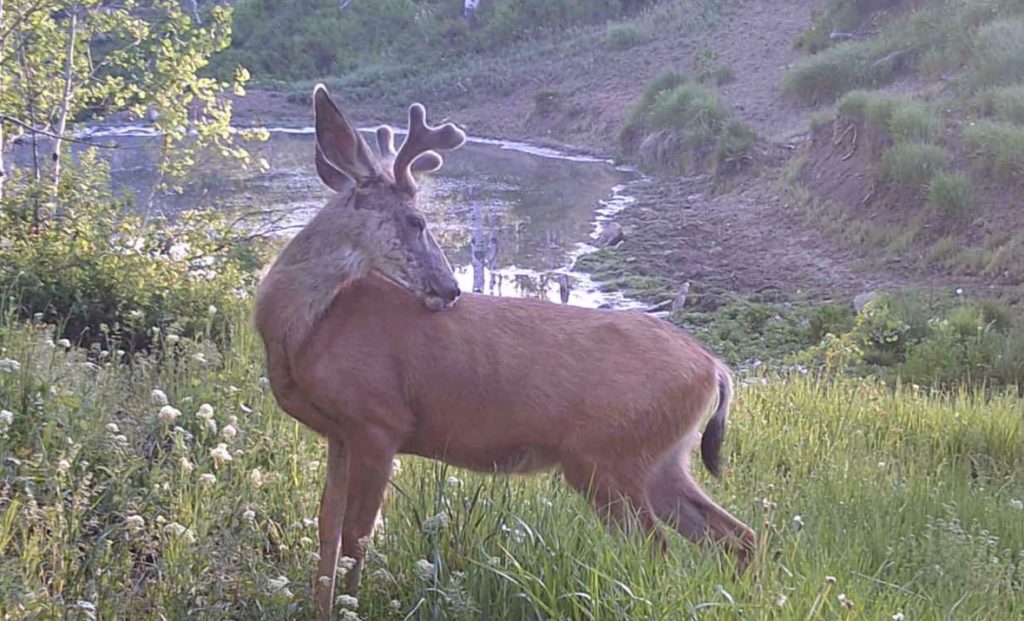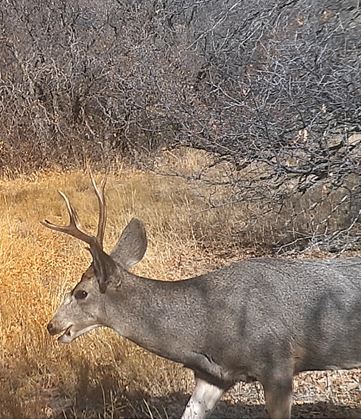Mule deer are one of the most common animals we find on our trail cameras. These deer are found in the western parts of the United States of America and Canada as well as in Northern Mexico. In these areas, they can be found anywhere from cities to the mountains. This species of deer is often confused with whitetail deer and Sitka blacktail deer because they look very similar.


Habitat
Mule deer are very versatile and they can be found in most places west of the Mississippi River. Depending on the time of the year mule deer can be found just about everywhere you look. They are able to adapt and live in most places in the west including people’s backyard. Mule deer eat a lot of different kinds of food, including but not limited to, grass, leaves, sagebrush, corn, squash, and pumpkins. This can make for an interesting jack-o-lanterns when Halloween comes. We have seen deer eating peoples jack-o-lantern of people’s porches! They will also have a water source within a relatively close distance from where ever they are bedding. Mule deer generally bed in high grassy areas or forested areas to hide from predators.

Characteristics
Mule deer have tan to gray fur other than a patch of white fur on their rump. One of the most defining characteristics of the mule deer is its ears. Their ears look a lot like donkeys/mules’ ears. This is actually where their name comes from. They also have tails that are 4 to 5 inches long that are white with a black tip on the end. Mule deer bucks also grow antlers every year after the old set sheds in February or March. When they start to grow again their antlers are covered in short fuzzy skin called velvet. This velvet gets rubbed off around September of every year showing the hard bone underneath. Mule deer are roughly 4 to 5 feet tall, not counting their antlers. A mature mule deers antlers will generally fork into two main beams which also fork making 4 distinct points as shown in the picture below. Mule deer will weigh between 100 and 300 pounds.


Mule Deer Sounds/ Calls
Not many people know this but mule deer have a few different sounds that they make. One of the sounds that they make is a low, quiet grunt sound. This sound is used in many different ways. Bucks will grunt when chasing does in the rut (breeding season). Does also use this noise when they fight another doe coming into its territory. Check out the video below to hear two does fight. Another sound they make that more people are familiar with is their distress sound. This sound is not very pleasant and is used mainly by fawns (baby deer) to signify they hurt or are scared and mom needs to come save them from something. If you want to hear this click on the video of the hunter saving a baby deer from the fence.
Mule Deer Fighting
Both male and female mule deer fight. Female mule deer (doe) are very territorial and if a new doe like the one above visits their territory they will first show dominance by lowering their ears so they are flat behind their head and walk towards the other doe trying to look as menacing as possible. Once close enough they will get up on their back legs and beat each other as hard as they can with their front legs until one of the mule deer gives up and runs away. See the video above and below.
Male mule deer (bucks) fight with their antlers. Sometimes this is just for fun or practice for when they are older. But the real fights are all for the ladies and can sometimes end in death. They start very similarly to the doe fights they sometimes put their ears back and then they show off their antlers to the other buck. This is used for intimidation and will usually scare off younger and smaller deer from the deer with the larger antlers. They then will smash their antlers together and push and shove their heads at each other trying to show which is the stronger buck. Check out the videos below to see them fight!
Common Preditors
There are a few different animals that chase mule deer. The main predators, besides humans, that chase mule deer are coyotes, bobcats, mountain lions, and bears. Check out the awesome footage below of mule deer getting attacked! These videos are of animals getting killed by other animals viewer discretion is advised.
Trail Camera Tips
The best way to find mule deer and get pictures or videos of them on trail cameras is to find animal trails on mountains or near water sources like ponds and rivers. Once you have found a place to put your camera set it up 3 to 3, 1/2 feet of the ground. You want them this high because mule deer can be 3 to 4 feet tall. This may need to be adjusted if you are trying to get a bigger mule deers antlers in your shot, this will take some trial and error to get them. Start by moving the camera up in small increments like 2 or 3 inches. If you are trying to get videos of fawns (Baby deer), put your camera about 2 feet off the ground. You may need to trim some of the grass, weeds, or branches in your camera’s way. If you need recommendations on what trail cameras to buy check out our reviews by clicking the button below!
Trail Camera Tips
Click below for more trail camera tips and tricks to help get better pictures.
USA Trail Cameras
Check out trail camera footage and laws from yours and other states in the USA!
Wildlife Bridge
Have you seen Utah’s wildlife bridge? Check out all the trail camera footage of animals using it!